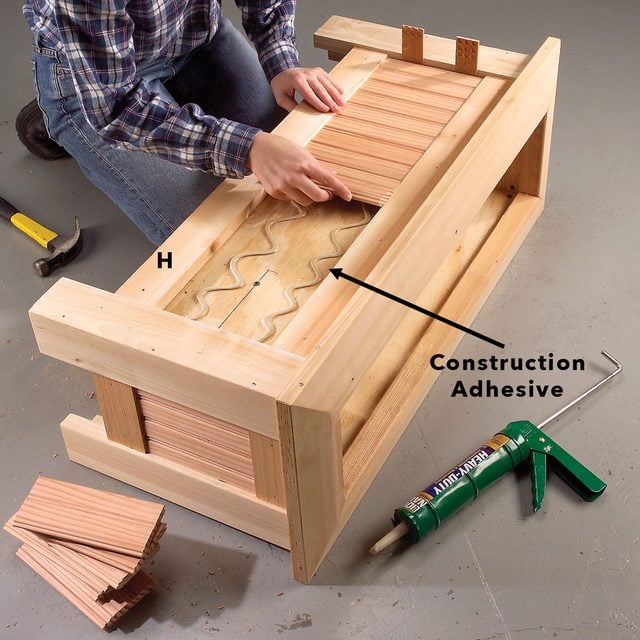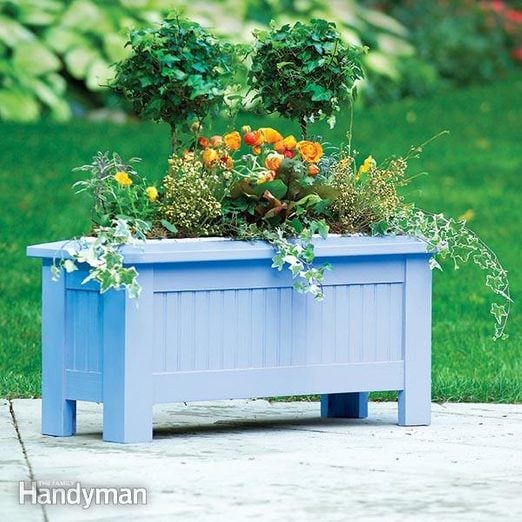How To Build a 3-Season Wooden Planter Box
Updated: Oct. 13, 2023
Enjoy lush, blooming plants in the spring, summer and fall.
Multiple Days
Beginner
$51–100
Introduction
Build a versatile home for your plants with these wooden box planter plans.Tools Required
- Basic hand tools
- Drill/driver - cordless
- Table saw
3-Season wooden planter box plans
This planter is basically a plywood box with legs that fit over each corner. That simple structure allows you to easily change the size, shape or look while following the same building steps.
It’s lined with an ordinary plastic planter box, the kind you can get at any home or garden center. That means you can lift out one plastic box and drop in another, instantly swapping container plants. You might, for example, start the growing season with spring bloomers in your planter while the other plants grow elsewhere. When the spring plants are past their prime, you can drop in the next set of plants.
The inner plastic box has practical advantages too. It separates damp soil from the wooden planter, which protects the wood from moisture problems like rot and peeling paint. And since this planter is really just a decorative container for the plastic pot, it’s much easier to build than a typical planter.
Materials & Cutting List
Project step-by-step (8)
Build the Box
The core of this planter is a box made from 3/4-in. CDX or BC plywood. Most home centers and lumberyards will sell you a partial sheet of plywood and cut it into manageable sizes for you to haul home.
- Cut plywood pieces to final size with a table saw, or clamp a straightedge to the plywood and cut it with your circular saw.
- Assemble the box with water-resistant wood glue and 6d galvanized box nails or exterior-grade screws. Use clamps to hold the sides upright.
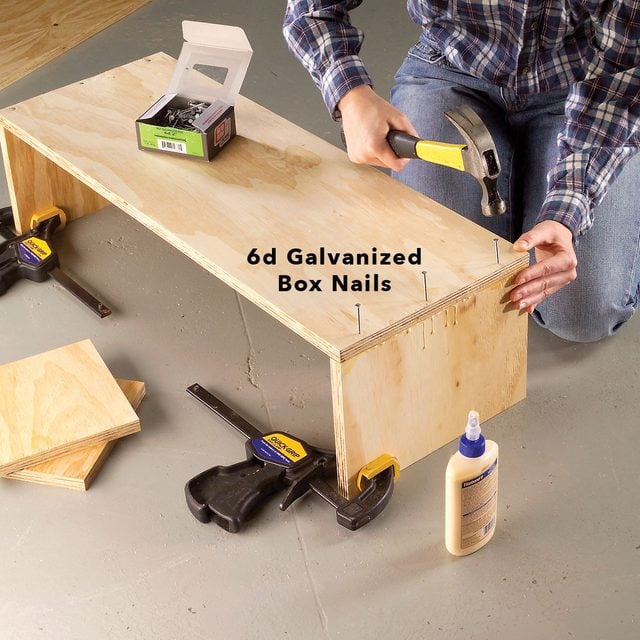
Add the Braces
- Add plywood braces inside the long planter to square the box and hold the long sides straight. Predrill screw clearance holes through the planter sides and screw in a plywood brace at each end. Center the brace.
- Pro tip: We centered our braces, but you can shift them down if they obstruct the liner.
- The other two planters don’t need braces if you make sure they’re square after you assemble them. Check them with a framing square and add braces if they’re needed.
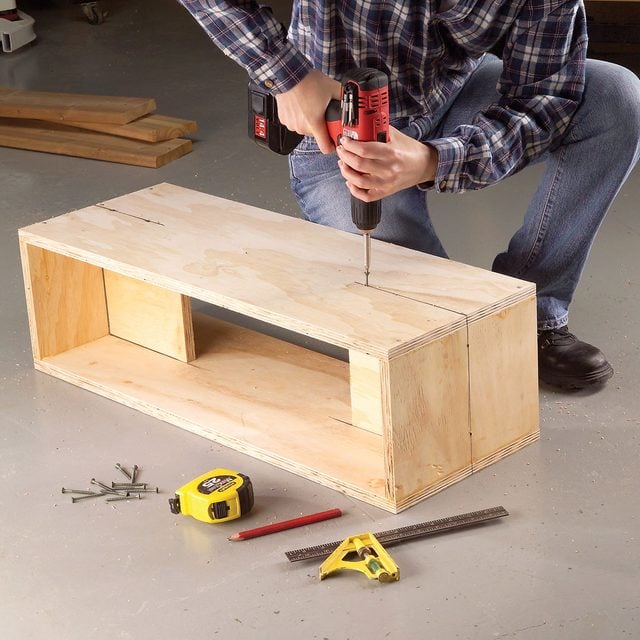
Assemble the Legs
We used 5/4×6 (1-in. x 5-1/2-in. actual dimensions) cedar decking for the legs, but you can substitute other 5/4 decking.
- First, rip the deck boards to 5-1/4 in. to remove the rounded corners on one edge. Then run the squared edge against the table saw fence when you rip the 3-in. and 2-in. wide leg pieces.
- Cut the pieces to length and then glue and nail them together with 8d galvanized casing nails.
- Buy your plastic planter boxes first and adjust the planter dimensions if necessary.
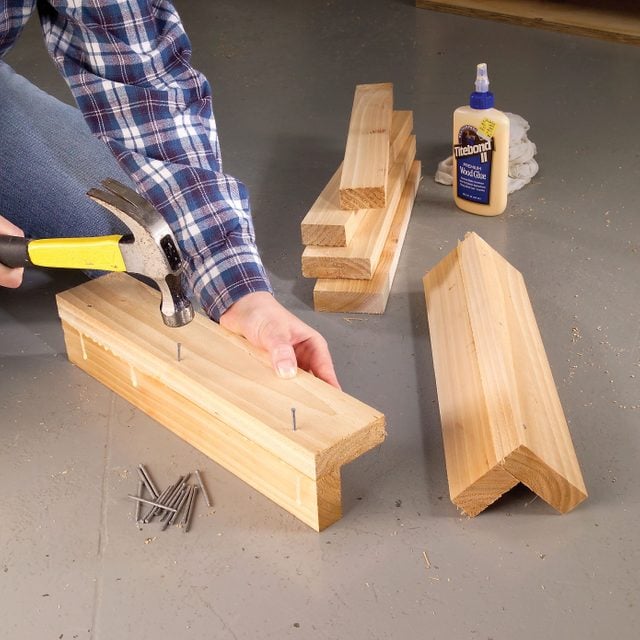
Attach the Legs
- Set the plywood box on a flat surface and screw the leg assemblies to it.
- Sand the saw marks from the board edges before you screw the assembled legs to the box.
- Make sure the legs are flush with the top of the planter box.
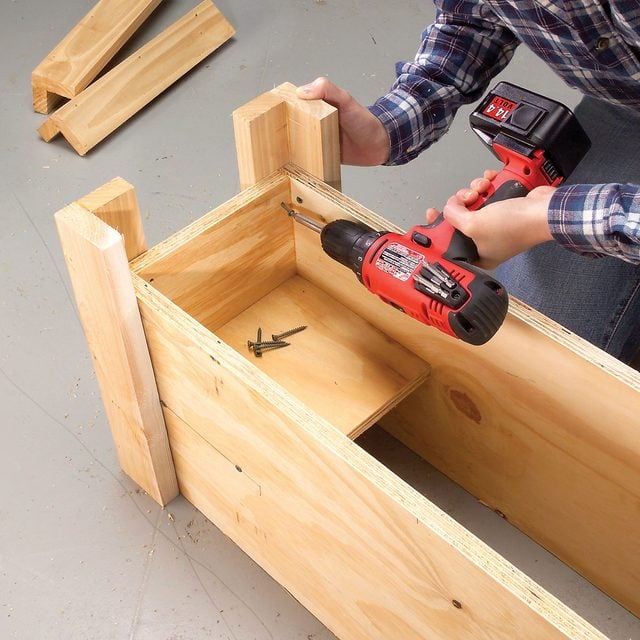
Bevel the Cap Boards
Ripping the bevel on the 2×4 top cap may require you to remove the blade guard. If so, use extreme caution to keep your fingers well away from the blade. Make sure the blade is tilted away from the fence.
- Rip a 20-degree bevel on the 2×4 caps with a table saw.
- Start the cut by pushing with your back hand while holding the board down with a push stick in your front hand. Keep a second push stick within easy reach.
- When your backhand gets to the rear edge of the table saw, pick up the second push stick and use it along with the front push stick to push the board clear past the saw blade.
- Keep your attention focused on the saw blade at all times. Shut off the saw and wait for the blade to stop before retrieving the beveled board.
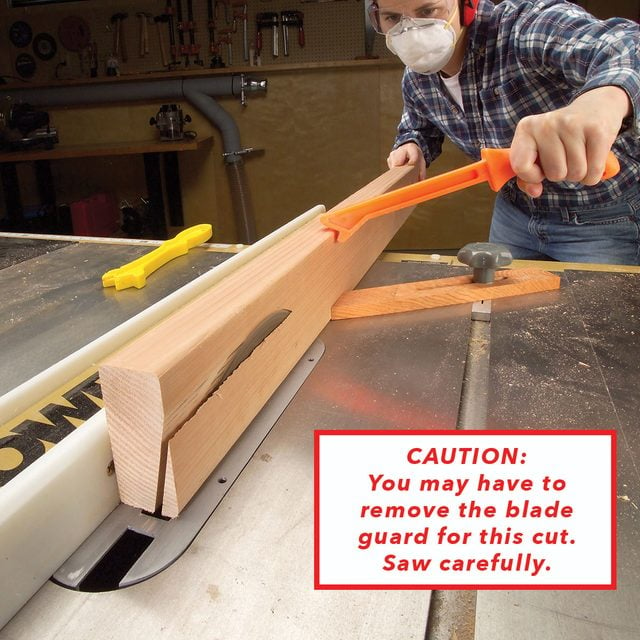
Assemble the Cap
It’s much easier to assemble the top cap pieces into a frame and then attach the frame to the box.
- Cut the cap pieces to length with 45-degree miters on the ends.
- Start by gluing the miters and clamping one long side as shown.
- Drill pilot holes for the nails.
- Drive a pair of 8d galvanized casing nails from opposite sides at each corner to pin the miters together.
- Offset the nails slightly so they don’t hit each other.
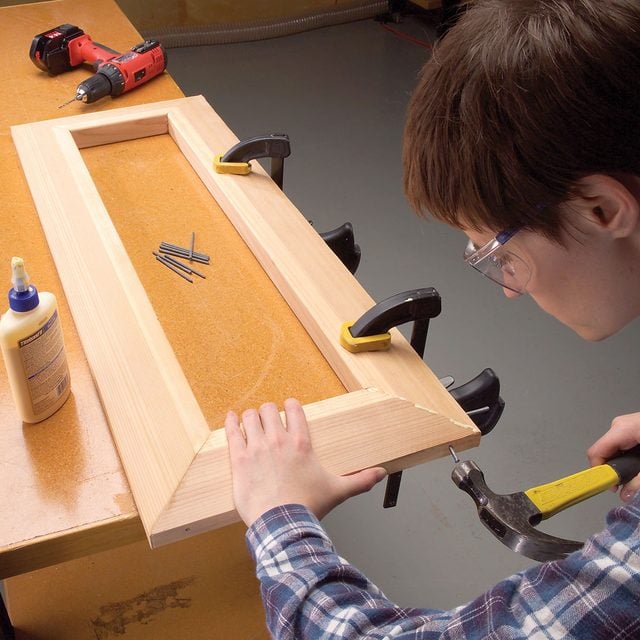
Attach the Cap
- Mount the frame to the box by centering it with an even overhang all around and nailing it down with 12d galvanized casing nails.
- Measure and drill 5/32-in. pilot holes for the nails, making sure they’re centered on the top edges of the plywood.
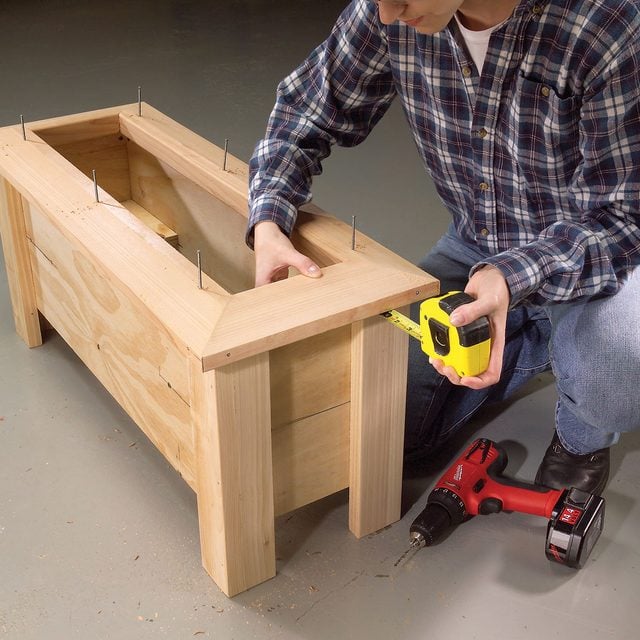
Add Siding to Complete the Planter
Beadboard is great for a traditional-looking painted planter. For the best-looking planter, plan ahead and cut the first and last boards to equal width.
- Start by nailing the top trim (H) to the plywood box with 4d galvanized casing nails.
- Use a precut length of beadboard as a spacer to position the bottom board precisely.
- When you glue in the beadboards, be sure to leave a 1/8-in. space at each end to allow room for expansion.
- Fill the space with caulk before painting.
